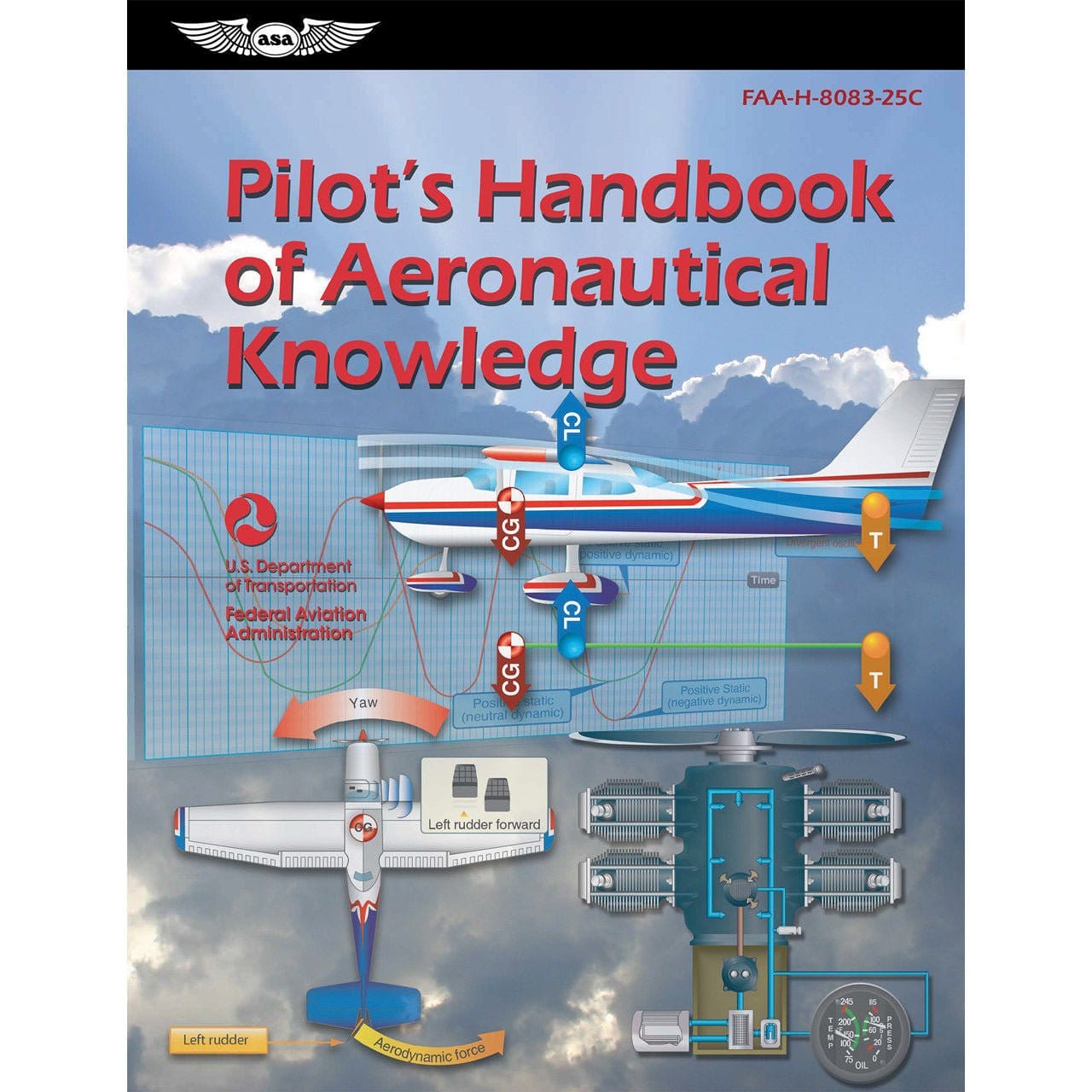Parte de ser um piloto é ficar por dentro do clima antes e durante o voo. Uma coisa importante a se manter por dentro é a mudança de frentes climáticas. Frentes frias, frentes quentes, frentes estacionárias e frentes oclusas — criam padrões climáticos variados.
Ajudaremos você a entender quais são esses padrões e forneceremos todo o conhecimento necessário para seu próximo voo.
RESUMO
-
As frentes meteorológicas são onde diferentes massas de ar se encontram, criando diversas condições climáticas.
-
Frentes frias tendem a trazer turbulência, ventos e tempestades à medida que o ar frio empurra o ar quente para baixo.
-
Frentes quentes ainda podem causar problemas de visibilidade, formação de gelo e camadas de nuvens.
-
Frentes estacionárias e oclusas geralmente resultam em mau tempo prolongado.

Os quatro tipos de frentes meteorológicas
Cada frente pode se comportar de forma diferente, isso porque cada tipo tem massas de ar únicas. Como piloto, é importante que você saiba como frentes frias, quentes, estacionárias e oclusas impactam seus planos de voo.
Frentes Frias
Frentes frias acontecem quando o ar frio avança e força o ar quente a subir rapidamente.
Muitas vezes você verá nuvens cúmulos-nimbos grandes e imponentes, sinalizando possíveis tempestades, rajadas de vento e turbulência.
O que é importante lembrar sobre frentes frias é que elas podem se mover rápido. Sua chegada transforma céus calmos em algo muito mais perigoso.
É provável que você sinta uma queda na temperatura à medida que a frente fria se aproxima, juntamente com rajadas de vento e turbulência.
Fique atento às linhas de tempestade que podem se formar, pois elas indicam o clima mais intenso ao longo da frente.
Frentes quentes
Agora, uma frente quente é muito mais lenta e constante do que sua contraparte fria, mas isso não significa que tudo seja tranquilo.
O ar quente se move suavemente sobre o ar mais frio e cria espessas camadas de nuvens, neblina e até mesmo precipitação leve.
Frentes quentes geralmente se estendem por uma área ampla. Basicamente, você pode voar em condições de baixa visibilidade por um bom tempo.
Você precisará ficar atento à formação de gelo, especialmente se houver ar frio preso em altitudes mais baixas. Não é incomum encontrar chuva congelante ao voar perto de uma frente quente, então fique atento a isso.
Frentes Estacionárias
Às vezes, duas massas de ar se encontram, mas não têm força suficiente para se afastarem.
Esse impasse cria uma frente estacionária. É quando o clima permanece na mesma região por dias. Isso é uma má notícia se você estiver voando, já que provavelmente enfrentará longos períodos de chuva, neblina e baixa visibilidade.
Embora as frentes estacionárias não produzam mudanças climáticas drásticas como as frentes frias ou quentes, a cobertura constante de nuvens e a precipitação podem tornar as coisas muito mais complicadas para o voo planejado.
Você pode acabar voando em condições IFR por mais tempo do que o esperado, então tenha isso em mente durante seu planejamento pré-voo.
Frentes Ocluídas
Frentes oclusas são um pouco mais complicadas, pois acontecem quando uma frente fria ultrapassa uma frente quente.
O clima que você encontra com frentes oclusas é frequentemente uma mistura de condições de frente fria e quente. Você pode esperar espessas camadas de nuvens, chuva congelante e possivelmente tempestades. Mas tudo isso depende de quanta umidade as massas de ar retêm.
Voar perto de uma frente oclusa geralmente significa lidar com condições imprevisíveis. Frentes oclusas podem não se mover tão rápido quanto frentes frias, mas ainda são algo para ficar de olho. Você pode encontrar gelo ou turbulência conforme as massas de ar colidem e se elevam.

Impacto das Frentes Frias no Voo
Quando você voa, pode querer viver uma aventura, mas com frentes frias nem sempre é o tipo de aventura que você deseja.
As frentes frias são conhecidas por trazer turbulência, ventos fortes, formação de gelo, menor visibilidade e, às vezes, condições climáticas severas, como tempestades ou granizo.
Quando esse ar frio empurra seu caminho sob uma massa de ar mais quente, ele faz com que o ar à frente da frente suba rapidamente, formando nuvens cumulonimbus imponentes. Esses são seus sinais de que turbulência e ventos imprevisíveis estão a caminho.
É provável que você sinta mudanças de vento ao cruzar uma frente fria, e a turbulência é uma certeza, especialmente em altitudes mais baixas.
Frentes frias também trazem rajadas de ventos de superfície, o que pode tornar o pouso ou a decolagem mais desafiador do que o normal.
E não se esqueça da possibilidade de tempestades severas; elas tendem a se alinhar ao longo da própria frente fria. Se linhas de tempestade se desenvolverem, evite-as a todo custo.

Frentes quentes e planejamento de voo
Frentes quentes são mais previsíveis que frentes frias, mas isso não significa que sejam completamente inofensivas.
À medida que uma massa de ar quente se move sobre o ar frio, as nuvens se formam em camadas, muitas vezes criando condições generalizadas de baixa visibilidade.
Frentes quentes geralmente trazem chuva leve ou garoa e podem se estender por grandes distâncias. Tenha isso em mente porque pode fazer com que você fique em condições IFR por um tempo (ótimo momento para ficar por dentro se precisar usar seu alternativo).
Fique atento à formação de gelo, especialmente ao voar em climas mais frios. Frentes quentes podem prender ar mais frio em altitudes mais baixas, o que pode levar à chuva congelante e ao acúmulo de gelo em suas asas.
Embora a turbulência geralmente seja uma preocupação menor com frentes quentes, os problemas de visibilidade e formação de gelo são suficientes para mantê-lo alerta.

Frentes Estacionárias e Seus Efeitos no Voo
Frentes estacionárias podem ser frustrantes porque não se movem muito. Você geralmente fica preso ao mesmo clima por dias a fio, seja com nuvens baixas, chuva ou garoa.
Voar através de uma frente parada significa que você provavelmente estará lidando com condições IFR prolongadas (assim como com frentes quentes), e as camadas de nuvens podem não lhe dar muitas oportunidades de subir acima delas.
No lado positivo, frentes estacionárias geralmente não trazem as tempestades severas ou turbulência pesada que as frentes frias trazem. Mas a chuva constante, tetos baixos e neblina podem tornar alguns voos longos e tediosos. Se você estiver planejando uma rota perto de uma frente estacionária, espere voar nessas condições por uma boa parte da sua viagem.

Frentes Oclusas e Riscos Voadores
Frentes oclusas combinam as piores características das frentes frias e quentes.
Então, uma frente oclusa acontece quando uma frente fria alcança uma frente quente. Isso faz com que o ar quente seja empurrado para cima do chão, deixando uma mistura de nuvens, chuva e, às vezes, tempestades.
Você pode acabar voando por diversas camadas de nuvens e cada uma delas trará um conjunto diferente de desafios para você enfrentar.
Uma frente como essa pode definitivamente ser perigosa porque o clima tende a ser mais imprevisível. A formação de gelo também é um grande problema, já que chuva congelante pode ser comum em frentes oclusas. Você também pode ter que lidar com turbulência, já que diferentes massas de ar entram em choque. Fique de olho nos boletins meteorológicos ao voar perto de uma oclusão e esteja preparado para que as condições mudem rapidamente.

Perguntas frequentes
-
Quais são os 4 tipos de frentes meteorológicas?
Frentes frias, quentes, estacionárias e oclusas, cada uma apresentando desafios únicos para os pilotos. -
O que é uma frente climática na aviação?
Uma frente climática marca o limite entre duas massas de ar, o que pode causar uma variedade de condições climáticas, afetando a segurança e o planejamento do voo. -
O que acontece quando você voa através de uma frente fria?
Sobrevoar uma frente fria pode causar turbulência severa, tempestades e linhas de tempestade, exigindo maior atenção e preparação. -
As frentes frias trazem turbulência?
Sim, frentes frias geralmente trazem turbulência significativa devido à colisão de massas de ar frio e quente.
Remover
Saber como lidar com frentes climáticas ajuda você a tomar decisões mais inteligentes na cabine. Quando você está armado com o conhecimento de que tipo de frente está voando, então você pode estar preparado.
Por mais tedioso que possa parecer a princípio aprender muito sobre boletins meteorológicos, os pilotos rapidamente descobrem que verificar os boletins com a maior frequência possível pode salvar vidas.
Voe com inteligência e segurança.
Interessado em clima para aviação?
Nossos guias foram projetados para ajudar!
-
Botas pneumáticas de degelo (principais características e benefícios)
-
Tetos de nuvens: o que os pilotos devem saber (guia completo)
Você achou este artigo útil?
Você acha que esquecemos de uma pergunta importante da entrevista? Deixe-nos saber nos comentários abaixo!







